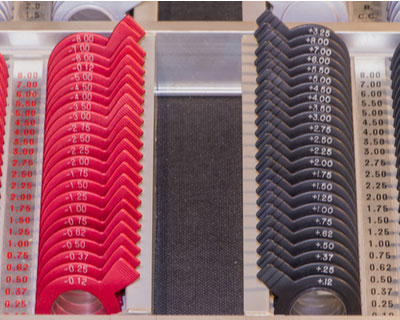If you've ever had eyeglasses you’re familiar with the odd series of letters and numbers that make up your prescription. We know these as the instructions for making your glasses, but what do they actually mean? Here’s a quick summary:
Which numbers are my right eye and which are my left eye on my prescription?
In a typical prescription, two acronyms—one for each eye—are listed:
- O.D. This is short for oculus dexter, and is your right eye
- O.S. This is short for oculus sinister, and is your left eye
What does “sphere (SPH)” mean on my prescription?
The sphere column is often abbreviated as SPH. This is the lens power needed to fix your vision. A minus sign (−) next to the number means nearsightedness (you see better up close and need distance correction). A plus sign (₊) indicates you are farsighted (you see better far away and need your near vision corrected).
Lens power is measured in diopters, so you may see the sphere field above written as −9.00 D—this means there are 9 diopters of nearsightedness. Think of the measuring system as an integer number line, with zero in the middle needing no correction. The further away you get from the zero on either the minus or plus side, the stronger your prescription is.

Trial lenses used for checking a person's glasses prescription
What is the “cylinder (CYL)” number on my prescription?
The cylinder number is how much astigmatism you have, if any. This is when part of the cornea has a different curve. Normally, an eye is shaped like a basketball—rotated any direction, the curve stays the same. An eye with astigmatism is oval- or egg-shaped, or more like a North American football—one curve is longer than the other. The CYL number corrects this different second curve.
Axis
This number tells you where the astigmatism is on the cornea. The axis—written in degrees between 1 and 180—indicates which way the astigmatism lines up.
Add
There is where any additional lens powers are written. For example, some people over age 40 don’t want an extra pair of glasses for reading. They choose to wear bifocals instead. The lower half of the lens gives them their reading vision.
Where is the lens power for prism on my prescription?
There may be a field for prism on the right side (not pictured). This is a special type of correction built into the lens for some people with double vision (seeing two separate images of the same object). The prism fuses the two images together so only one image is seen.
What about contact lenses?
Because contacts sit directly on the eye, the prescription is different than one for eyeglasses. A contact lens prescription includes measurements specific to the size and brand of your contacts. Before filling a prescription, you also need what’s called a “contact lens fitting” to see if they’re right for you.